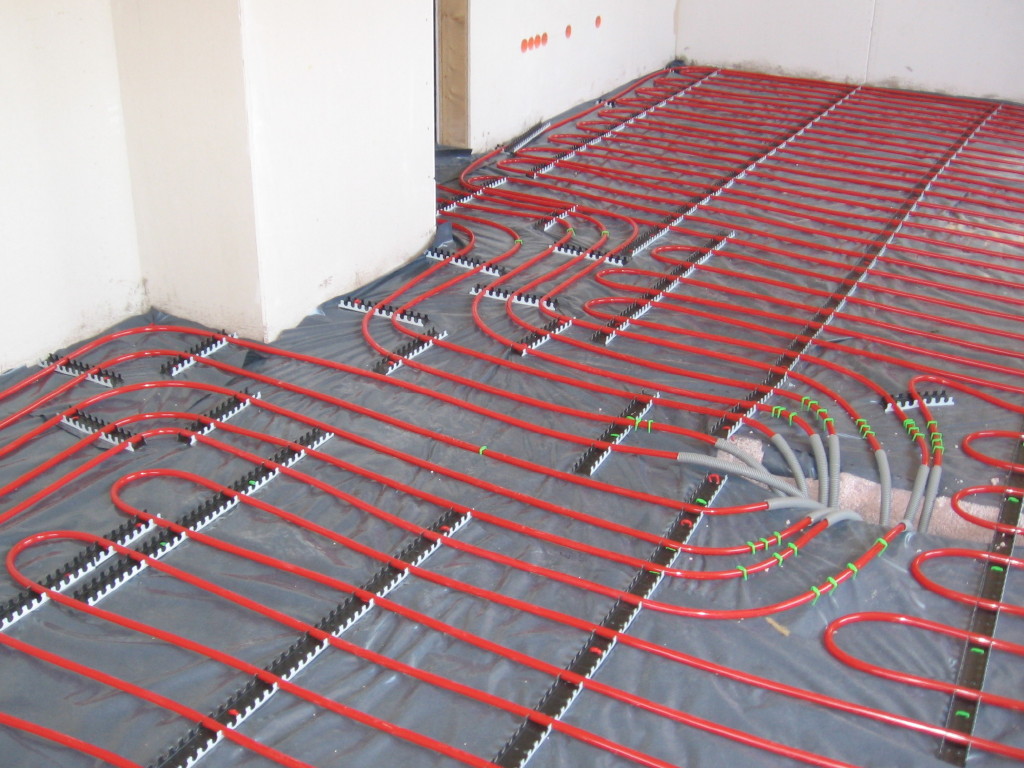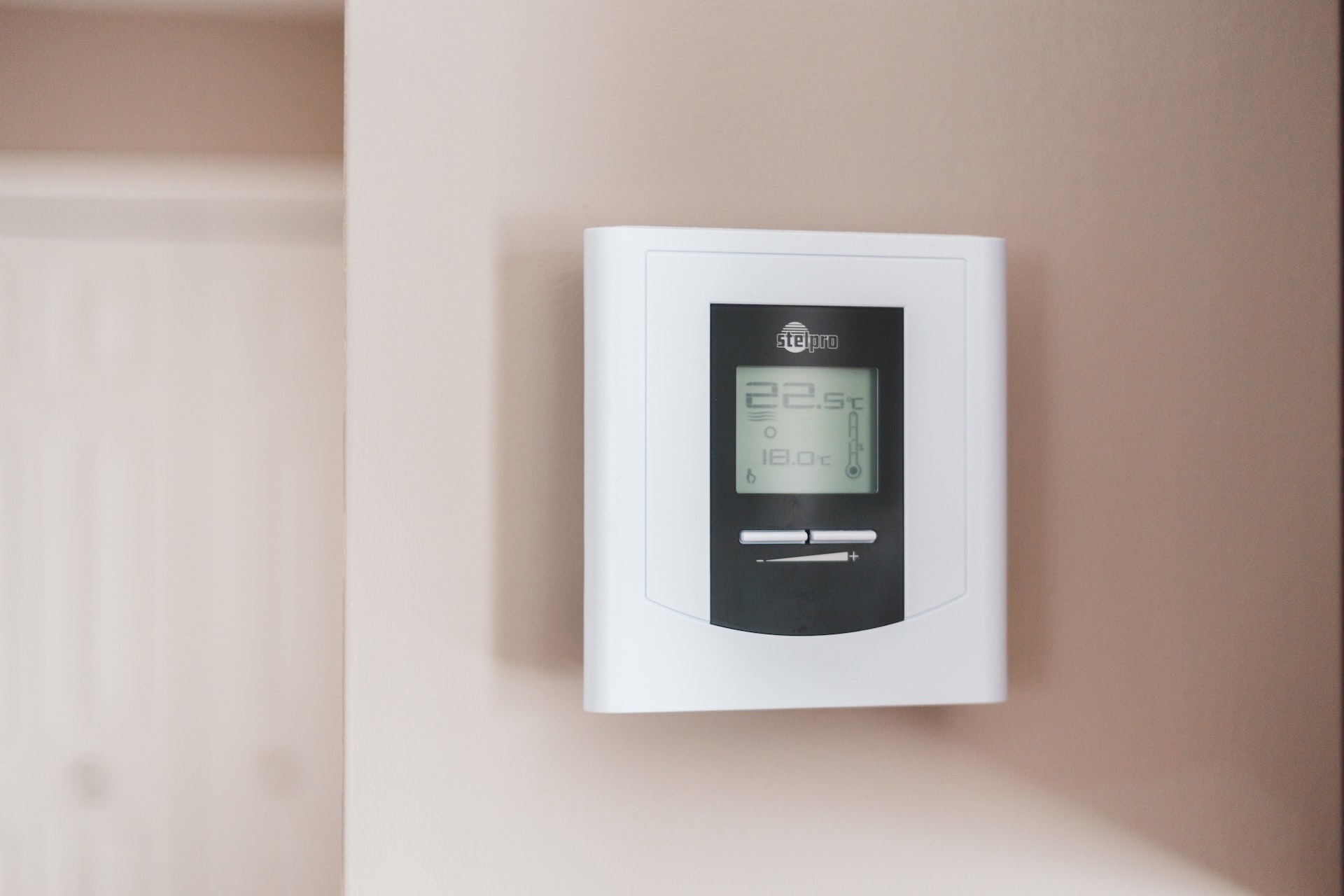
Close

Electric underfloor heating is becoming an increasingly popular choice for homeowners looking to upgrade their heating systems. It’s an efficient and effective way to heat your home, and it can provide a comfortable and consistent level of warmth without the need for bulky radiators or air vents.
It can even increase your property value, making it one of the best home renovations to do before selling.
However, like any heating system, electric underfloor heating has its pros and cons, and it’s important to weigh these carefully before deciding whether it’s the right choice for you. In this blog, we’ll explore the advantages and disadvantages of electric underfloor heating, so you can make an informed decision about whether it’s the best option for your home.

Electric underfloor heating systems are a type of heating system that is installed beneath the flooring of a room. They work by running an electric current through a heating element, such as a wire or underfloor heating mats, which are installed in the subfloor or between the floor joists.
As the heating element warms up, it radiates heat upwards, warming the floor and the surrounding air.
Unlike traditional heating systems, which rely on radiators or forced air to distribute heat, electric underfloor heating provides a more even and consistent level of warmth throughout the entire room. It can be installed in new or existing buildings and can be used with a variety of flooring materials, including tile, stone, and laminate.
Additionally, electric underfloor heating systems can be controlled by a thermostat, allowing you to set the temperature to your desired level and save energy by only heating the rooms you’re using. Our expert Cheshire builders look at some of the pros of underfloor heating installation first.
One of the primary benefits of electric underfloor heating is the level of comfort it provides. Because the system relies on radiant heat, it warms not only the air in the room but also the objects and surfaces in the room, including the floor itself. Even heat distribution is key to comfort levels.
This creates a more even and consistent level of efficient warmth throughout the entire space, without any cold spots or hot air blowing around.
This means that the temperature of the floor is consistent from one end of the room to the other, which can create a more comfortable and pleasant living environment. Additionally, since electric underfloor heating is installed beneath the flooring, it provides a more luxurious and cozy feeling underfoot compared to walking on cold floors.
Another advantage of electric underfloor heating is its energy efficiency, which can help to reduce heating bills and provide a more sustainable heating solution. Because electric underfloor heating operates at lower temperatures than traditional heating systems, it requires less energy to warm a room.
This means that it can be a cost-effective solution in terms of energy usage, especially if the electric supply is sourced from renewable sources like solar or wind power.
Additionally, because electric underfloor heating provides warmth from the floor upwards, it can help to keep the room feeling warmer for longer, reducing the need to constantly adjust the thermostat. Overall, electric underfloor heating can be an energy-efficient way to heat your home, which can help to save on heating bills, energy bills and reduce your carbon footprint.

With underfloor heating, there are no traditional radiators or air vents taking up valuable wall or floor space, which can give you more design freedom. One of the benefits of an electric underfloor heating system is its design flexibility, which can give homeowners more options for their interior design choices.
Electric systems are unobtrusive and don’t require radiators or other heating equipment, which can free up wall space and allow for more creative use of the available square meterage. This can be especially beneficial in smaller rooms, where space is at a premium. Additionally, because the heating is installed under the floor surface, it is hidden from view, which means that it won’t interfere with the look of the room.
This allows homeowners to choose their preferred floor surface, whether it’s tiles, hardwood, or another material, without having to worry about how it will affect the heating system. Overall, getting electric underfloor heating installed can provide greater design flexibility, allowing homeowners to create the look they want without compromising on heating performance. They are also easier to install than a wet underfloor heating system.

Another advantage of an electric underfloor heating system is that it typically requires less maintenance than other heating systems. Electric systems are generally very reliable, and once installed, they often require little to no maintenance. Unlike a traditional central heating system such as bulky radiators, which may require periodic cleaning or repair, electric underfloor heating systems can provide a hassle-free heating solution that is less prone to breakdowns or malfunctions. Unlike a water underfloor heating system or ‘wet systems’ that may need servicing every now and then.
Additionally, electric underfloor heating systems do not have any moving parts, so there is no need to worry about mechanical wear and tear over time.
This means that homeowners can enjoy a more worry-free heating solution that doesn’t require frequent maintenance. Furthermore, as electric underfloor heating systems are installed beneath the floor, they do not require any additional power supply or take up extra space in an existing room, making it an efficient and space-saving choice.
With underfloor heating, there is no air blowing around, which can reduce the amount of dust and allergens in the air. Traditional heating methods, such as radiators can circulate dust and allergens throughout a home or building. This is because these heating methods create air currents that can stir up dust and allergens that are present in the environment. An electric system, on the other hand, doesn’t rely on air currents to heat a space. This means that it doesn’t create the same amount of movement in the air, and therefore, doesn’t stir up dust and allergens in the same way.
Another way in which electric underfloor heating can improve air quality is by reducing the risk of mold growth. Traditional heating methods can create areas of high humidity in a home or building. This is because these heating methods can create condensation on walls and windows, which can lead to the growth of mold. Electric underfloor heating, however, doesn’t create the same amount of condensation as these traditional heating methods.
This is because the heat is radiated evenly from the floor levels, which means that there are no areas of high humidity in the environment. By reducing the risk of mold growth, electric underfloor heating can help to create a healthier indoor environment, keep air fresh and improve air quality.
One of the questions many people have before considering underfloor heating systems for a renovation project is the installation costs (and resulting labour costs). You might be asking, “is underfloor heating expensive?”. The short answer is, yes.
The cost of installing underfloor heating can be higher than traditional heating systems, especially in existing buildings where the floors may need to be lifted and insulation added. The initial installation costs can be high due to the need for specialized installation and electrical work. The cost of the system itself can also be high, especially for larger areas or for more advanced systems with features like programmable thermostats or WiFi connectivity.
Additionally, the ongoing cost of operating electric systems can also be high. While electric underfloor heating is energy efficient when used properly, the cost of electricity can be higher than other fuel sources, such as natural gas. Therefore, it’s important to carefully consider the upfront and ongoing costs of electric underfloor heating before deciding if it’s the right choice for your heating needs.

Installing underfloor heating can take longer than traditional heating systems, and you may need to wait for the floors to dry completely before you can use the heating.
Unlike other heating systems that can be installed relatively quickly, the electric underfloor heating installation process can take several days or even weeks, depending on the size of the area being heated. Additionally, the installation process can be disruptive to a home or building, as it requires access to the subfloor and may involve removing existing flooring.
The long installation time can be a significant inconvenience for homeowners or building owners who need their heating system installed quickly or who cannot tolerate significant disruption to their daily routines. It’s important to carefully consider the installation time required for electric underfloor heating when deciding if it’s the right choice for your heating needs.
Underfloor heating may not be compatible with all types of flooring or floor coverings, and certain materials may require special installation techniques.
While electric underfloor heating can work with a variety of floor types, including tile, laminate, and engineered hardwood, it may not be suitable for thicker or denser flooring materials, such as solid hardwood or thick carpeting. This is because these types of flooring can insulate the heat, preventing it from radiating evenly across the floor surface.
Additionally, the installation process for electric underfloor heating may require the removal of existing flooring, which can be a significant additional cost and inconvenience for homeowners or building owners. Therefore, it’s important to carefully consider the compatibility of electric underfloor heating with your preferred flooring type when deciding if it’s the right choice for you.

If there is a problem with the underfloor heating, it can be more difficult and expensive to repair than traditional heating systems.
While electric underfloor heating systems are generally reliable and require little maintenance, if a problem does occur, it can be costly to repair. This is because the electrical components of the system are embedded within the subfloor and can be difficult to access without removing the flooring above.
Additionally, the specialized nature of the system means that repair work must be carried out by a qualified technician, which can add to the overall cost, making it one of the key cons of underfloor heating. Ensure that you choose a reputable installer with a good track record for quality and reliability.
With underfloor heating, it can be more difficult to control the temperature in individual rooms, as the entire system heats the entire floor.
While electric underfloor heating systems can be controlled with a thermostat, the heating response time can be slower than other heating systems. This can make it difficult to fine-tune the temperature to suit individual preferences, as adjustments to the thermostat may take longer to take effect.
Additionally, electric underfloor heating may not be suitable for spaces where rapid changes in temperature are required, such as commercial kitchens or workshops. This is because the system can take some time to warm up or cool down, which can be a hindrance in these types of environments.

At Elliott Construction, we provide a vast amount of home construction services and products to the North West. We build new homes in Cheshire, including the following areas: